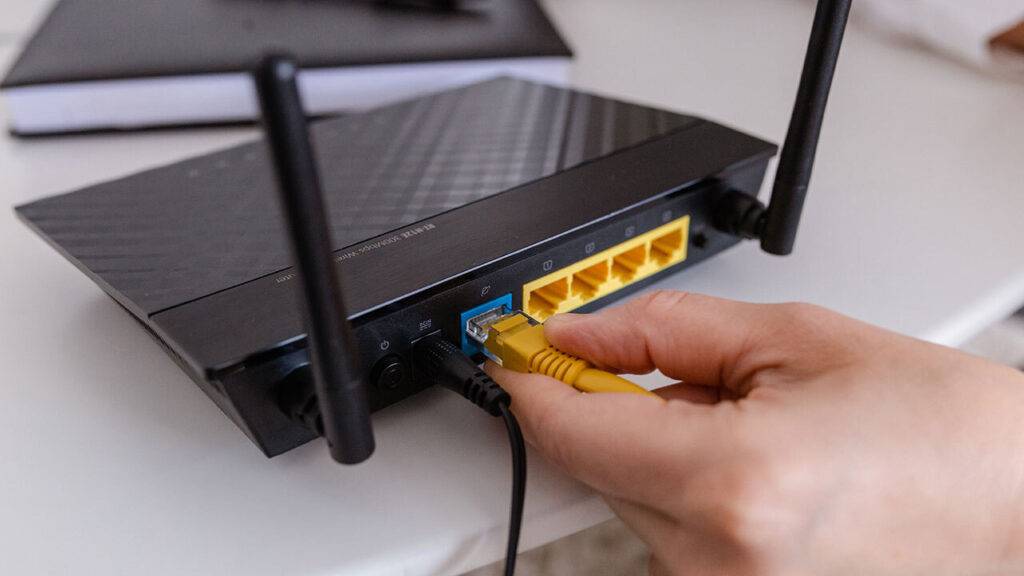
Wi-Fi isn’t the only way to grant your computer online access. There’s also Ethernet— a time-tested technology that relies on Ethernet cables to transmit data and connect devices to each other in close proximity.
As one of the most popular systems of for physically connecting computer devices together to form a local area network, it’s likely that you’re already using Ethernet LAN at your workplace, at the bank, and at home. In this article, we’ll discuss the basics of Ethernet, it’s pros and cons, and how it’s mainly used.
First, a bit of History…
Ethernet was invented at the Xerox Corporation’s Palo Alto research center in 1973 by Robert Metcalfe and his team of engineers. Industry standards based on their work were established in 1980 under the IEEE (Institute of Electrical and Electronics Engineers) 802.3 set of specifications, which helped define technical details and govern Ethernet operation.
The technology has evolved and grown increasingly diverse in the years since. Today’s Ethernet is significantly faster than the original Ethernet and has four standard speeds: 10 Mbps (10 Base-T), 100 Mbps (Fast Ethernet), 1,000 Mbps (Gigabit Ethernet), and 10,000 Mbps (10-Gigabit Ethernet)
Types of Ethernet Connections
- 10 Base-T: An Ethernet standard that transmits at 10 Mbps over twisted wire pairs (telephone wire). 10Base-T was the first version of Ethernet to use a star architecture.
- Fast Ethernet: This type of Ethernet connection offers high speeds of roughly 100 Mbps when transmitting. To operate this type of Ethernet connection, you’ll generally need a Cat5 cable or twisted pair.
- Gigabit Ethernet: Gigabit Ethernet offers about 1,000 Mbps or 1 Gbps. This kind of connection is beginning to replace Fast Ethernet and phasing its predecessor out since it better supports video streaming and other more advanced tasks.
- 10-gigabit Ethernet: Offering speeds of roughly 10 Gbps, you’ll need a Cat6a, Cat7 twisted pair cable, or other fiber-optic cables. This type of connection is not yet as widely supported as Gigabit Ethernet and Fast Ethernet but will become increasingly used in the years to come.
However, keep in mind that quoted speeds are always theoretical. In the real world, Ethernet speed depends on a myriad of factors, including your choice of cables and the number of people sharing this network.
Ethernet vs Wi-Fi
Wi-Fi is widely loved for its mobility, and has replaced Ethernet technology in various settings. But to this day, many businesses and households still rely on Ethernet to provide fast, secure and stable network connections.
The main difference between the two technologies is that Ethernet data transfers through physical cable, whereas Wi-Fi connections transmit data through wireless signals.
Ethernet is almost always faster than Wi-Fi, which makes it ideal for video streaming, gaming and online conferences. Since you’re directly plugged into the network, you won’t need to worry about your signal getting interfered by other electronics or barriers. Cables also makes the network less susceptible to cyber attacks, since the attacker would have to be at the scene in order to gain access.
However, it would be impractical for a company to use Ethernet to connect devices that are far outside their offices, since it is intended for networks with devices that are connected over a short distance. Portable devices are also out of the question, as there’s no plugging a Cat6 cable into your smartphone.
Advantages of Ethernet
- Speed
- Stability
- Security
Disadvantages of Ethernet
- Convenience
- Transportability
- Cost
Components of an Ethernet Network
An Ethernet network begins at the network interface card (NIC) that’s connected to each PC or desktop. Low-end network card speeds can accommodate 10 Mpbs, 100 Mpbs and 1,000 Mbps networks. To achieve higher speeds, you will need to upgrade to a faster network card.
Connected to the card is the cable, which is usually a blue cable with copper wires inside. The wires are twisted to reduce electromagnetic interference. This makes shielding unnecessary, keeping the cables small in diameter and reducing cost, which is why these cables are usually referred to as “unshielded twisted pair” or UTP cables. The cables are rated in categories, from Category-5 (Cat-5) to Category 7 (Cat-7). For even faster speeds, fiber-optic cables can be used instead.
How to set up an Ethernet LAN?

A LAN is a network of computers and other electronic devices that covers a small area such as a room, office, or building. It contrasts with a wide area network (WAN), which spans a large geographical area.
Below are 4 easy steps to help you set up a wired Ethernet LAN at home.
Step1
Locate the Ethernet port on your computer or laptop. You will often find the port on the back of a computer tower or on the side of a laptop. If you can’t find any Ethernet ports on your device, you may need to purchase an USB-to-Ethernet adapter.
Step2
Insert one end of the network cable into the Ethernet port, applying light pressure until you hear a click.
Step3
Insert the other end of the network cable into one of the “LAN” or “Network” ports on your network router or hub. Routers and hubs often provide numbered ports on the back of the device, which correspond to numbers on the lighted display on the front of the device. The router will automatically detect your computer or laptop and display a connectivity light for the Ethernet port number.
Step4
View the network connection status icon located on the computer’s task bar. When connected to a wired network, your computer will automatically receive Internet access without further configuration.
-Voilà! Welcome to Ethernet.